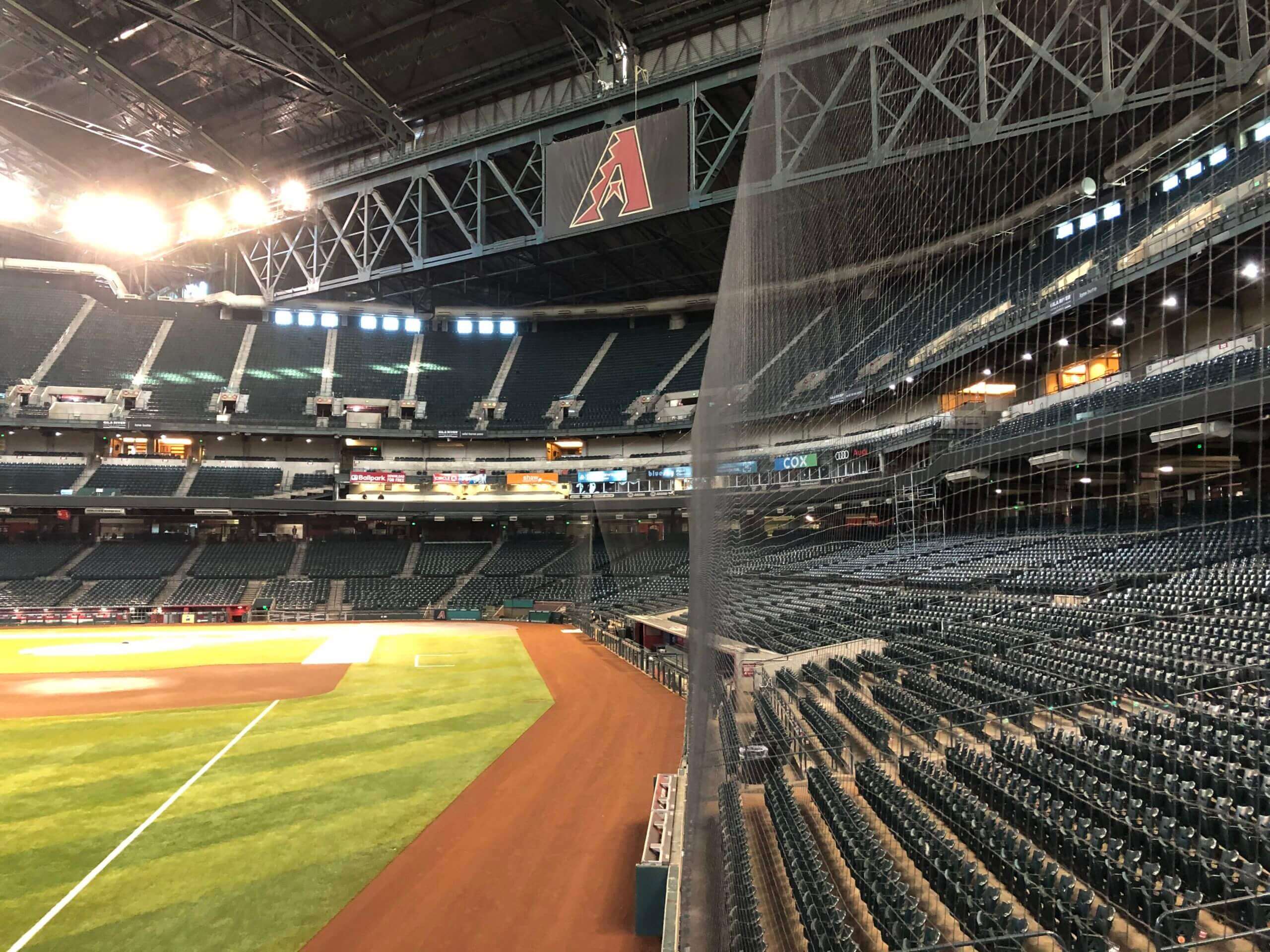Getting struck by a baseball while attending a Major League Baseball (MLB) game is an inherent risk that fans accept when going to the ballpark. However, thousands of fans are injured every year from foul balls and errant throws that travel into the stands, sometimes causing serious injuries like concussions or broken bones. With baseballs leaving the field of play at speeds over 100 mph, even a momentary lapse in attention can put fans in harm’s way.
This raises questions over how much liability teams and stadium owners hold to protect spectators, especially with more hard-hit balls and higher velocities in today’s game. Lawsuits against MLB clubs have met varying degrees of success over the years, often running into difficulties with the so-called “Baseball Rule” which limits liability. But calls have grown louder recently to increase safety measures like protective netting as high-speed videos reveal just how little reaction time fans have. This article will examine if and when spectators can successfully sue after being struck and injured by a ball at an MLB stadium.
Assumption of Risk

When attending an MLB game, fans assume certain inherent risks associated with the sport of baseball. By choosing to attend a game, fans accept that objects like bats and balls may enter the stands and cause injury. This legal concept is known as the assumption of risk doctrine. It limits the liability of stadium owners and teams when spectators voluntarily expose themselves to known risks.
In most states, the level of duty owed by teams to fans is limited by the assumption of risk. Fans understand balls and bats may leave the field of play and take precautions like sitting behind protective netting. Teams provide this netting in high-risk areas to mitigate known dangers. But fans sitting in unprotected areas are held to have assumed the normal risks of attending a baseball game.
Liability Waivers
Most MLB teams include liability waiver language on the back of tickets that aims to transfer liability for fan injuries away from the team and league. This waiver language asserts that ticket holders assume all risks associated with attending a game and cannot hold the team or MLB liable for injuries. The enforceability of these waivers varies by state, but teams rely on fine print on the back of tickets as a first legal defense against injury lawsuits.
Whether these waivers fully protect teams from liability depends on the specifics of each legal case and jurisdiction. However, the intent is to place responsibility on fans to protect themselves from common risks like foul balls and to discourage lawsuits seeking damages from teams.
Factors in Potential Lawsuits

Several key factors can determine if an injury from a baseball results in a lawsuit. These include:
-
Severity of injury – More serious injuries, such as concussions or permanent vision damage, are more likely to prompt legal action than minor injuries like bruises. Courts are more sympathetic to plaintiffs with severe, life-altering injuries.
-
Team/staff actions – Lawsuits are more likely if staff or officials acted negligently leading up to the incident, like failing to warn fans of the danger or not pausing play when fans were in harm’s way. Evidence of negligence strengthens a plaintiff’s case.
-
Ballpark protections – If the ballpark failed to provide adequate protections like netting or warnings about foul balls, plaintiffs have a stronger argument. Lawsuits focus on whether the park took reasonable safety precautions.
Notable Past Lawsuits
Fans being struck by balls or bats at MLB games has led to several high-profile lawsuits over the years.
Some examples include:
-
In 2018, a 79-year old fan sued the Los Angeles Dodgers and outfielder Yasiel Puig after being hit in the face by a foul ball during a game. She sustained facial injuries including fractures and nerve damage.
-
In 2021, a fan sued the Atlanta Braves and outfielder Jorge Soler after being hit by a ball Soler threw into the stands following a World Series victory. The fan claimed the ball struck her in the chest, causing injuries and negatively impacting her quality of life.
-
In 2015, a fan sued the Boston Red Sox after being hit in the face by a broken bat that flew into the stands during a game. Her injuries required surgery and she alleged negligence for allowing such hazards.
-
In 2008, a fan sued the Chicago Cubs after being hit in the face by a foul ball. The fan lost vision in one eye due to injuries sustained from the incident.
Ballpark Protections

Teams and stadiums have implemented various measures over the years to try to protect fans from batted balls. The main protection is the use of safety netting behind home plate and along the baselines. In December 2019, MLB Commissioner Rob Manfred announced that all 30 MLB teams would extend protective netting to at least the far ends of both dugouts for the 2020 season. Many teams have gone even further and installed netting that extends well beyond the dugouts and protects areas of the outfield as well.
Some specific efforts include:
-
The New York Mets extending netting in 2018 from behind home plate to the far ends of both dugouts.
-
The Los Angeles Angels installing nets from foul pole to foul pole in 2019 at Angel Stadium.
-
The Washington Nationals enclosing the entire field-level seats in netting in 2017.
Teams are responding to fan concerns and continuing to evaluate ways to keep spectators safe while preserving the unique experience of catching a foul ball. Safety nets are the primary protection, with coverage expanding significantly in recent years. Other efforts like section signage, public address announcements, and seat relocation for early arriving fans also aim to limit exposure to line drives.
Fan Responsibilities

While stadiums should implement protections, fans also have a responsibility to pay attention during games. Foul balls can leave the bat at over 100 mph, meaning fans must remain alert. As one expert states, “The fan has a duty to pay attention to everything that’s going on around him or her.”
Fans seated in the most vulnerable areas, like along the baselines or behind home plate, can’t assume foul balls won’t come their way. Taking precautions like bringing a glove or paying attention to the game is key. Fans must balance enjoying the game with protecting themselves by staying aware of their surroundings. With thousands of balls hit foul each season, no one can relax at a ballgame.
Limiting Liability
Teams and stadiums take various measures to limit liability for fan injuries from fouls balls and broken bats. One of the most common is posting warning signs and announcements that alert fans to the inherent dangers of attending a baseball game. Many tickets even include text stating that the bearer assumes all risks. Teams will argue that fans who choose to sit in unprotected areas closer to the field are willingly accepting the risks involved.
Another approach is installing more safety netting and barriers to protect fans in the most vulnerable areas. After several high-profile incidents, MLB recommended in 2015 that teams extend netting to the far ends of both dugouts. Following additional injuries, an update in 2018 encouraged teams to expand netting all the way to the foul poles. Teams are also experimenting with new netting material that is thinner and more transparent yet still effective at stopping batted balls.
Some legal experts believe MLB should consider making foul ball injuries an inevitable workplace hazard covered by workers’ compensation funds, similar to professional hockey. This would limit costly litigation and create a straightforward system to support injured fans. However, MLB has not embraced this approach so far.
Successful Lawsuits

While most lawsuits from fans hit by balls are unsuccessful, there have been some notable cases of fans winning legal judgments. In 2017, a 60-year old Cubs fan named Jay Loos was awarded $67,200 after being struck in the eye by a foul ball at Wrigley Field [1]. The fan suffered permanent vision loss and claimed the Cubs were negligent in not extending protective netting.
In another case in 2022, a fan attending an Atlanta Braves World Series game was awarded $1.1 million after being hit in the face by a ball hit by Jorge Soler [2]. The fan suffered multiple facial fractures. These cases demonstrate that while difficult to win, fans can successfully sue after being struck and injured by balls at MLB games if negligence can be proven.
Conclusion
Getting hit by a baseball at a game can be a frightening experience, but successfully winning a lawsuit is challenging. Fans assume an inherent risk of injury when attending a baseball game, and ballparks implement various measures to limit liability. As a fan, focus on your own responsibility by staying alert and protecting yourself.
Key takeaways:
- Injured fans must prove negligence by the team or league to successfully sue. Courts have set a high bar, as attending a baseball game involves inherent risks.
- Teams implement protections like netting and warning fans to pay attention to reduce liability. Courts expect fans to assume responsibility for their own safety as well.
- Limit distractions, pay attention to the game at all times, consider seat location carefully, and react quickly if a ball comes your way.
- Successful lawsuits are rare but have occurred in cases of truly negligent behavior by teams or leagues. Courts aim to balance fan safety with preserving the nature of the game.
- While being struck is scary, focus on your recovery. Suing is challenging and should not be viewed as a windfall.
By assuming some risk, using common sense, and staying focused on the game, fans can enjoy baseball while minimizing the chances of injury. With reasonable precautions by both ballparks and fans, hopefully a day at the ballgame can remain safe and fun for all.








